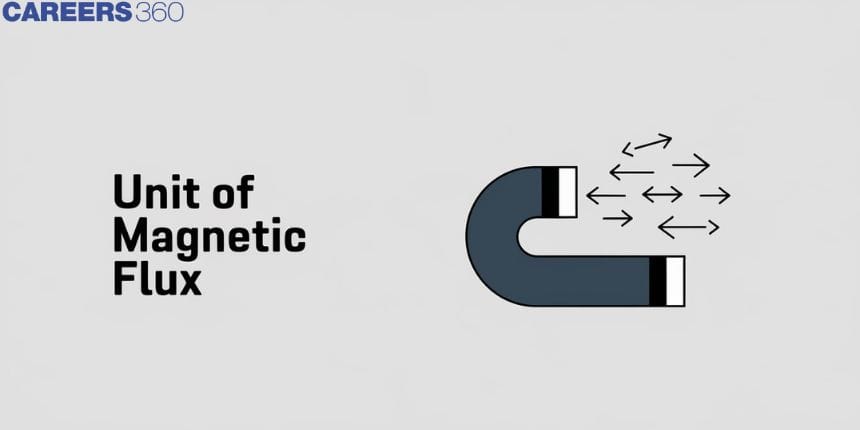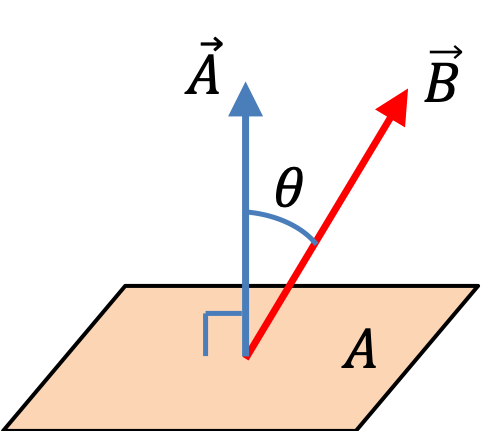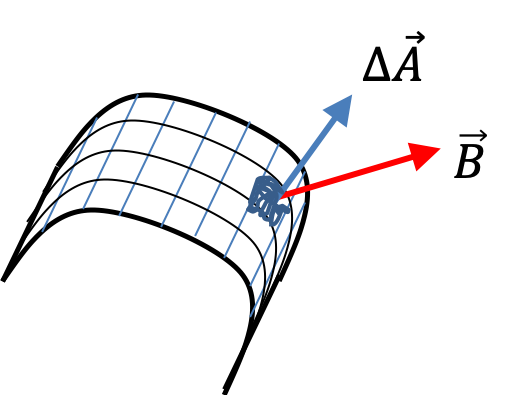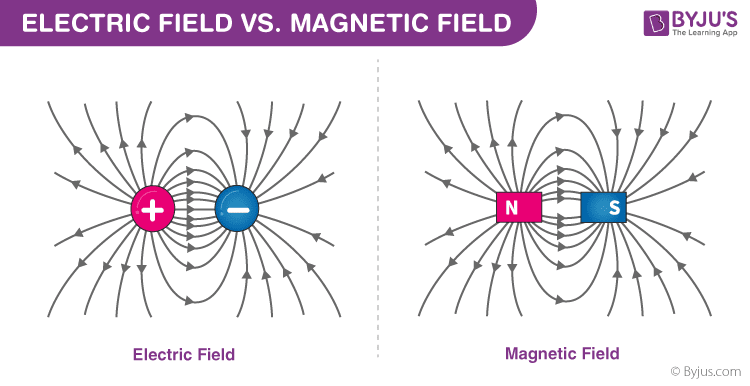Unit of Magnetic Flux - SI Unit and CGS Unit, FAQs
In this article we will talk about the Magnetic flux, Magnetic flux density, Unit of magnetic flux, magnetic flux density.
This Story also Contains
- 1.2 Units of the Magnetic Flux
- CGS Unit of Magnetic Flux
- Flux Units
- 1.5 What is Magnetic Flux Density?
- 1.6 Magnetic Flux Density Unit:
- 1. 7 Uniform Field Case.
- ,
- 1.8 (Calculus) General Cases.
- 1.9 Understanding Magnetic Flux
- 1.10 Measurement of Magnetic Flux

What is magnetic Flux?
Magnetic Flux is the number of magnetic field lines passing through the given closed area. It is denoted by the symbol φ (Phi). It is given by the equation
ΦB = B.A = B A cosϴ | ………1 |
Where
φB = Magnetic Flux(Weber)
B= Magnetic Field (Tesla)
A =Enclosed Area (m2)
ϴ= Angle at which magnetic field lines passes through the given enclosed surface area.
Also check-
1.2 Units of the Magnetic Flux
The SI unit of the Magnetic Flux is Weber (Wb). Weber unit is named after the German physicist Wilhelm Eduard Weber.
The unit of the magnetic flux can be written or expressed in terms of the other units. For example
Wb=kg m2/s2 A
= V.s
=H.A
=T.m2
=J/A
=108Mx
Where s – second, J –Joules, A- Ampere, T- Tesla, Mx- Maxwell, V- Volt, H- Henry,
CGS Unit of Magnetic Flux
The CGS unit of the Magnetic Flux is Maxwell or Abweber (abWb)
Flux Units
Submultiples of Weber (Wb)
Value | SI Symbol | Name |
10-1 Wb | dWb | deciweber |
10-2 Wb | cWb | centiweber |
10-3 Wb | mWb | milliweber |
10-6 Wb | µWb | microweber |
10-9 Wb | nWb | nanoweber |
10-12 Wb | pWb | picoweber |
10-15 Wb | fWb | femtoweber |
10-18 Wb | aWb | attoweber |
10-21 Wb | zWb | zeptoweber |
10-24 Wb | yWb | yoctoweber |
Multiples of Weber
Value | SI Symbol | Name |
101 Wb | daWb | decaweber |
102 Wb | hWb | hectoweber |
103 Wb | kWb | kiloweber |
106 Wb | MWb | megaweber |
109 Wb | GWb | gigaweber |
1012 Wb | TWb | teraweber |
1015 Wb | PWb | petaweber |
1018 Wb | EWb | exaweber |
1021 Wb | ZWb | zettaweber |
1024 Wb | YWb | yottaweber |
1.5 What is Magnetic Flux Density?
Magnetic flux density(B) is outlined because the force acting per unit current per unit length on a wire placed at right angles to the magnetic field.
• Units of B is Tesla (T) or Kgs−2A−1Kgs−2A−1
• B is vector amount
B= F/I*l | ………2 |
l=length of wire
F= force acting on the wire
I=current flowing
1.6 Magnetic Flux Density Unit:
The CGS and SI unit of magnetic flux density
Unit of Magnetic Flux Density | |
SI unit | Tesla (abbreviated as T) |
CGS unit | Gauss (abbreviated as G or Gs) |
Magnetic flux gives the measures of the total number of magnetic field lines passing through the given surface are. The area here can be of any size, orientation with respect to the direction of the magnetic field line. SI Unit of the magnetic flux is Weber. It is a vector quantity. It is measure by the equipment called as Fluxmeter.The magnetic flux per unit area is called as the flux density.
Flux Density= Magnetic FluxArea (Weber/ meter2) (Weber per meter square) | ………3 |
SI Unit of the magnetic flux density is then Wb/m2. It is also called as the magnetic induction. Unit of Magnetic induction is Tesla.
Flux Density= Magnetic FluxArea (Tesla) | ………4 |

Figure 1 Magnetic flux thru a floor is biggest while the floor is perpendicular to the magnetic area lines. In general, magnetic flux of a uniform magnetic area thru flat floor of a loop is ΦB=BAcosθ. We write this in vector notation as ΦB=B⋅A We denotes magnetic flux of magnetic area B with the aid of using ΦB. Consider an open flat floor with location A.A. To take orientation of the floor, we introduce location vector AA which has significance AA and course everyday to the floor.
1. 7 Uniform Field Case.
If B is uniform, then flux of this area thru the floor will be
ΦB,uniform=B⋅A.=BAcosθ
, 
Fig 2. Uniform Filed Case
Where θ is angle between B and A.
1.8 (Calculus) General Cases.
In the overall case of arbitrary area and arbitrary floor, we smash the floor into small patches of flat areas, and follow Eq. (3) to every patch. Summing over all patches offers us an estimate of the internet flux thru the floor. We can write this manner as a proper sum. ΦB≈∑B⋅ΔA
Fig 3. General Case
n the restrict of infinitesimally small patches, we get the precise flux,
Which we write as a conceptual integral.
ΦB=∫Surface B⋅dA.
Also Read:
- NCERT solutions for Class 12 Physics Chapter 8 Electromagnetic Waves
- NCERT Exemplar Class 12 Physics Solutions Chapter 8 Electromagnetic Waves
- NCERT notes Class 12 Physics Chapter 8 Electromagnetic Waves
1.9 Understanding Magnetic Flux
Faraday’s high-quality insights lay on locating a easy mathematical relation to give an explanation for the collection of experiments that he performed on electromagnetic induction. Faraday made several contributions to technological know-how and is broadly referred to as the finest experimental scientist of the 19th century. Before we begin appreciating his work, allow us to apprehend the idea of magnetic flux which performs a main element within side the electromagnetic induction. In order to calculate the magnetic flux, we recall the sphere-line photograph of a magnet or the device of magnets, as proven within side the photograph below.

Fig4. Electrical vs. Magnetic Lines
The magnetic flux via a aircraft of the location given via way of means of A this is located in a uniform magnetic subject of importance given via way of means of B is given because the scalar manufactured from the magnetic subject and the location A. Here, the perspective at which the sphere traces by skip via the given floor location is likewise important. If the sphere traces intersect the location at a glancing perspective, this is,
• While the perspective among the magnetic subject vector and the location vector is sort of same to 90ᵒ, then the ensuing flux may be very low.
• When the perspective is same to 0ᵒ, the ensuing flux is maximum.
Mathematically,
ϕB=B.A=BAcosΘ
Where θ is the perspective among vector A and vector B. If the magnetic subject is non-uniform and at unique elements of the floor, the magnetic subject is unique in importance and direction, then the whole magnetic flux via the given floor may be given because the summation of the manufactured from all such location factors and their corresponding magnetic subject. It is apparent from the equation given above that the magnetic flux is a scalar quantity. It has SI unit of Weber (Wb) or tesla meter squared (Tm2)
1.10 Measurement of Magnetic Flux
Measuring magnetic flux The SI unit for magnetic flux is Weber (Wb) or Tesla square meter (Tm2), named after the German physicist Wilhelm Weber. The magnetic flux can be measured with a magnetometer. Suppose a magnetometer probe is moving in an area. 0.6 m2 near a large magnetic sheet and shows a constant measured value of 5 mT. Then the magnetic flux through this area is calculated as (5 × 103 T) ⋅ (0.6 m2) = 0.0030 Wb. Field reading over an area, it would be necessary to find the average reading.
Also read -
- NCERT Solutions for Class 11 Physics
- NCERT Solutions for Class 12 Physics
- NCERT Solutions for All Subjects
NCERT Physics Notes:
Frequently Asked Questions (FAQs)
It is null because there are no magnetic field lines outside of a solenoid.
Shows the magnetic field.
When the charge particle such as electrons moves through the filed that generate the magnetism.
A.m1 is the unit of strength of the magnetic field.